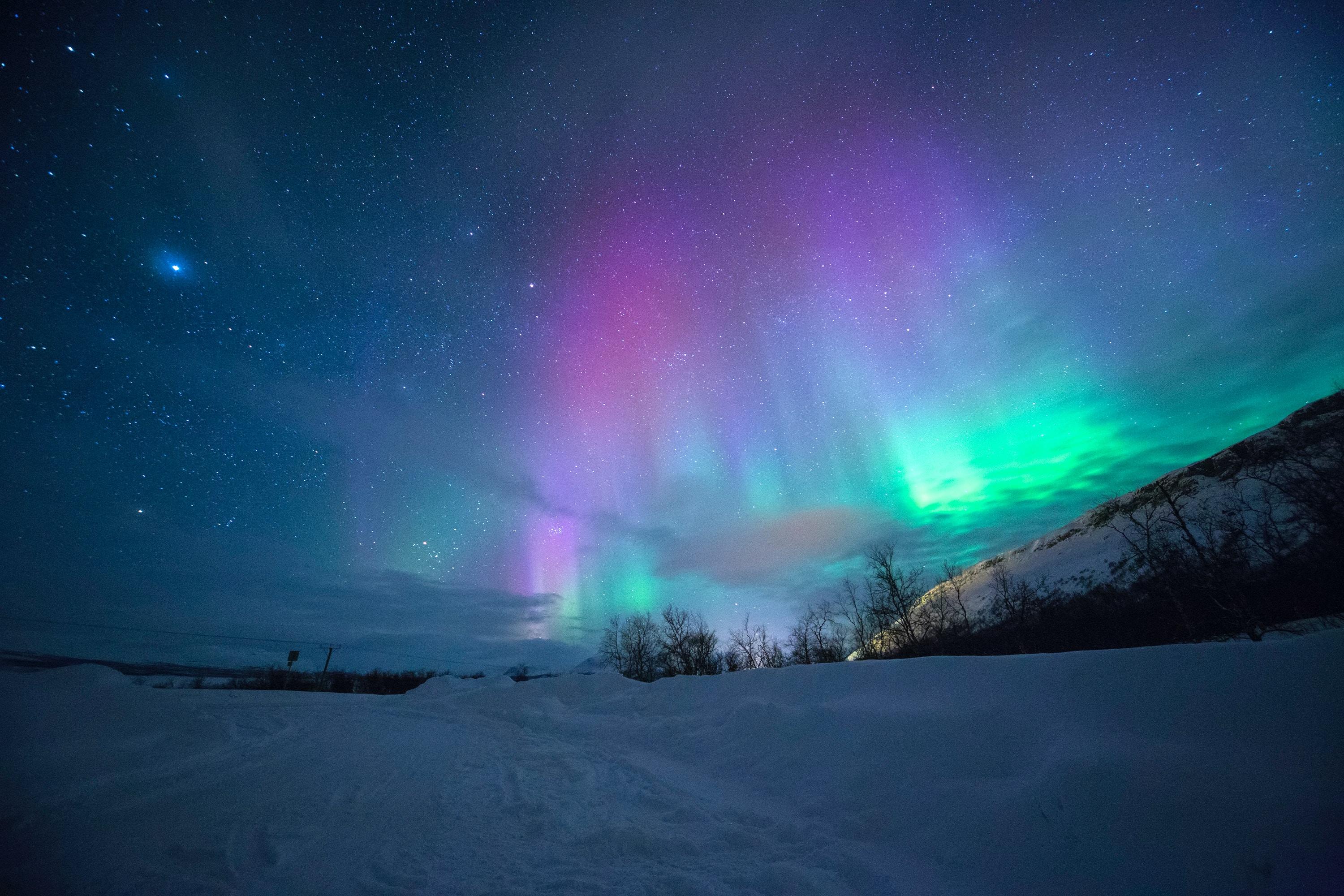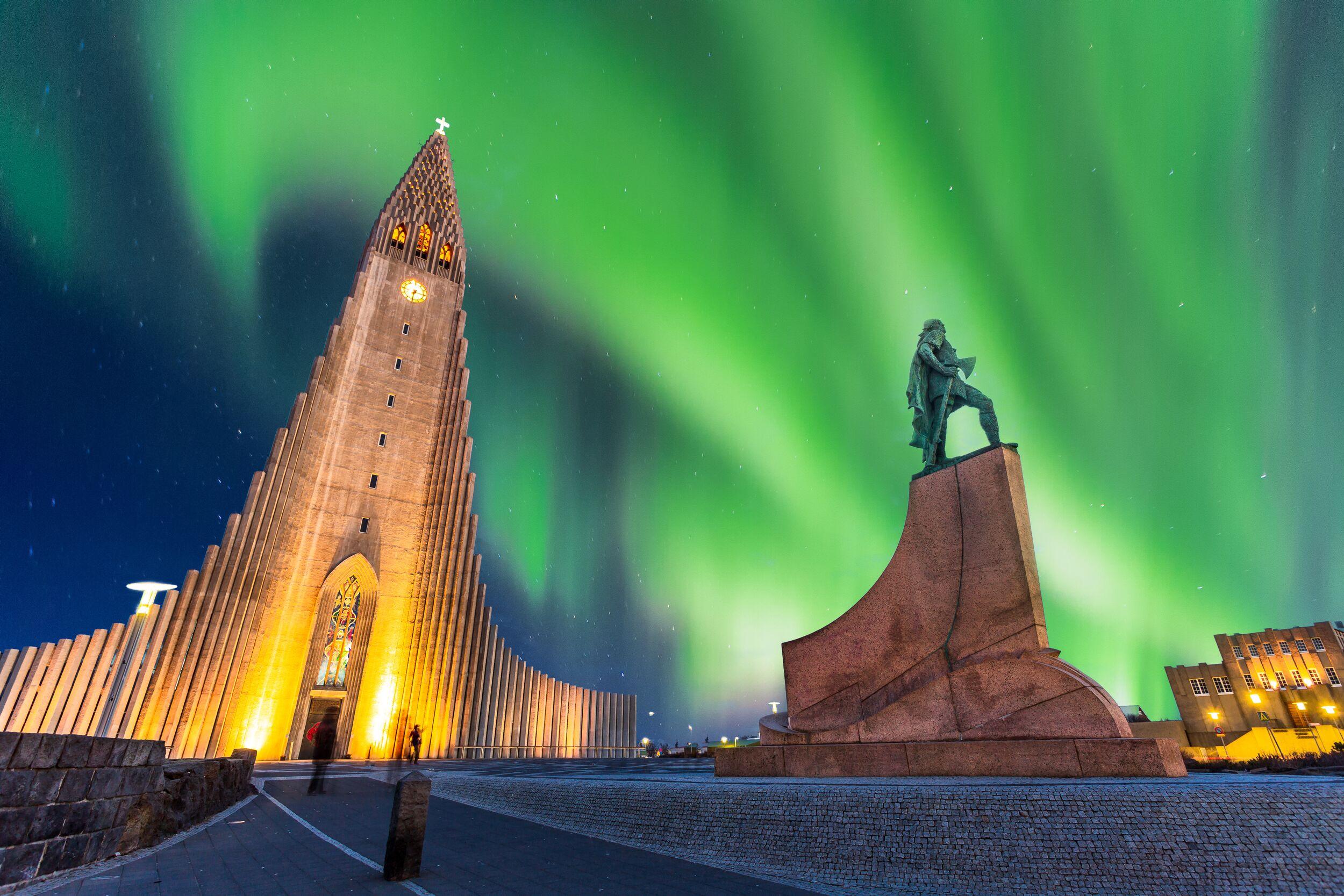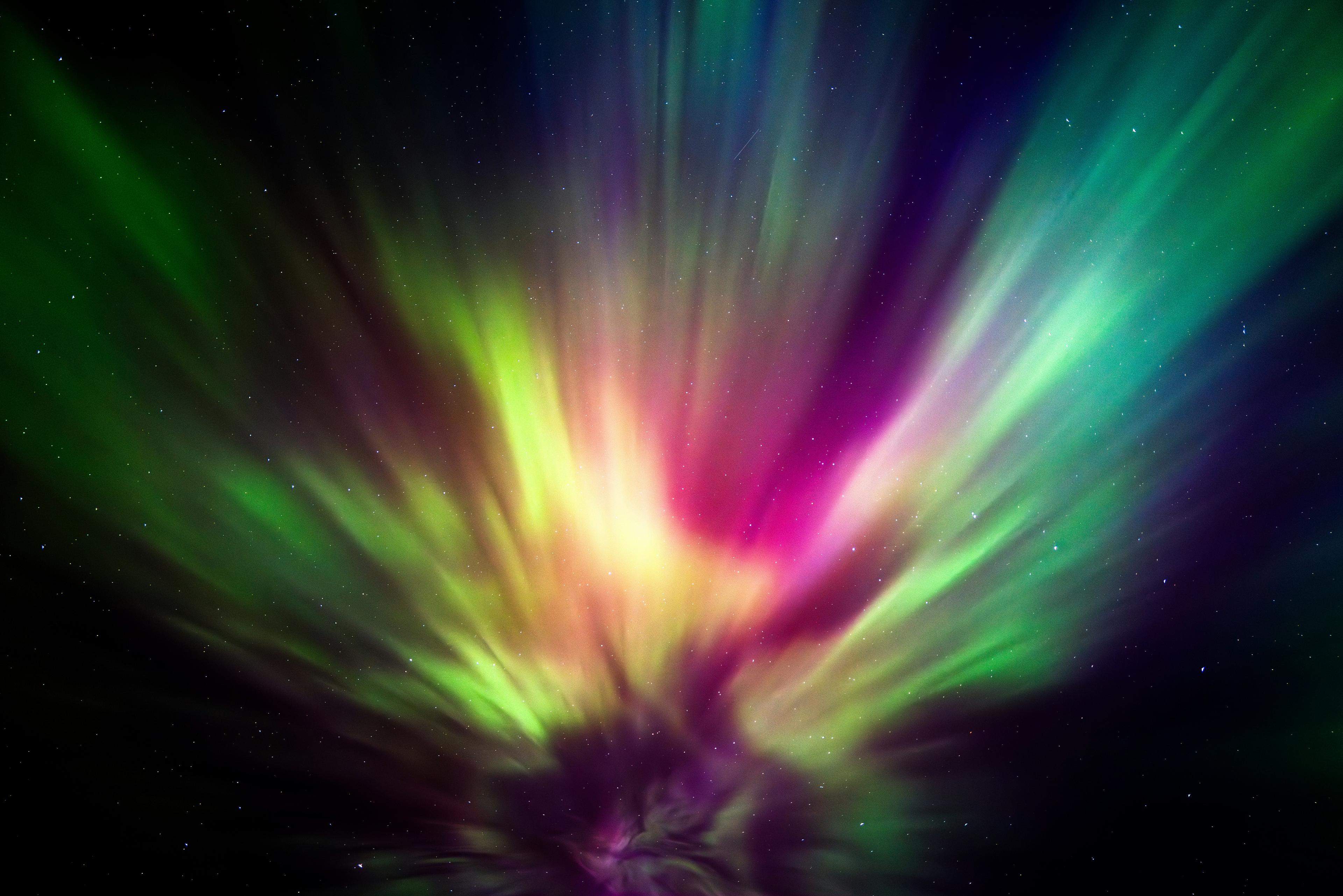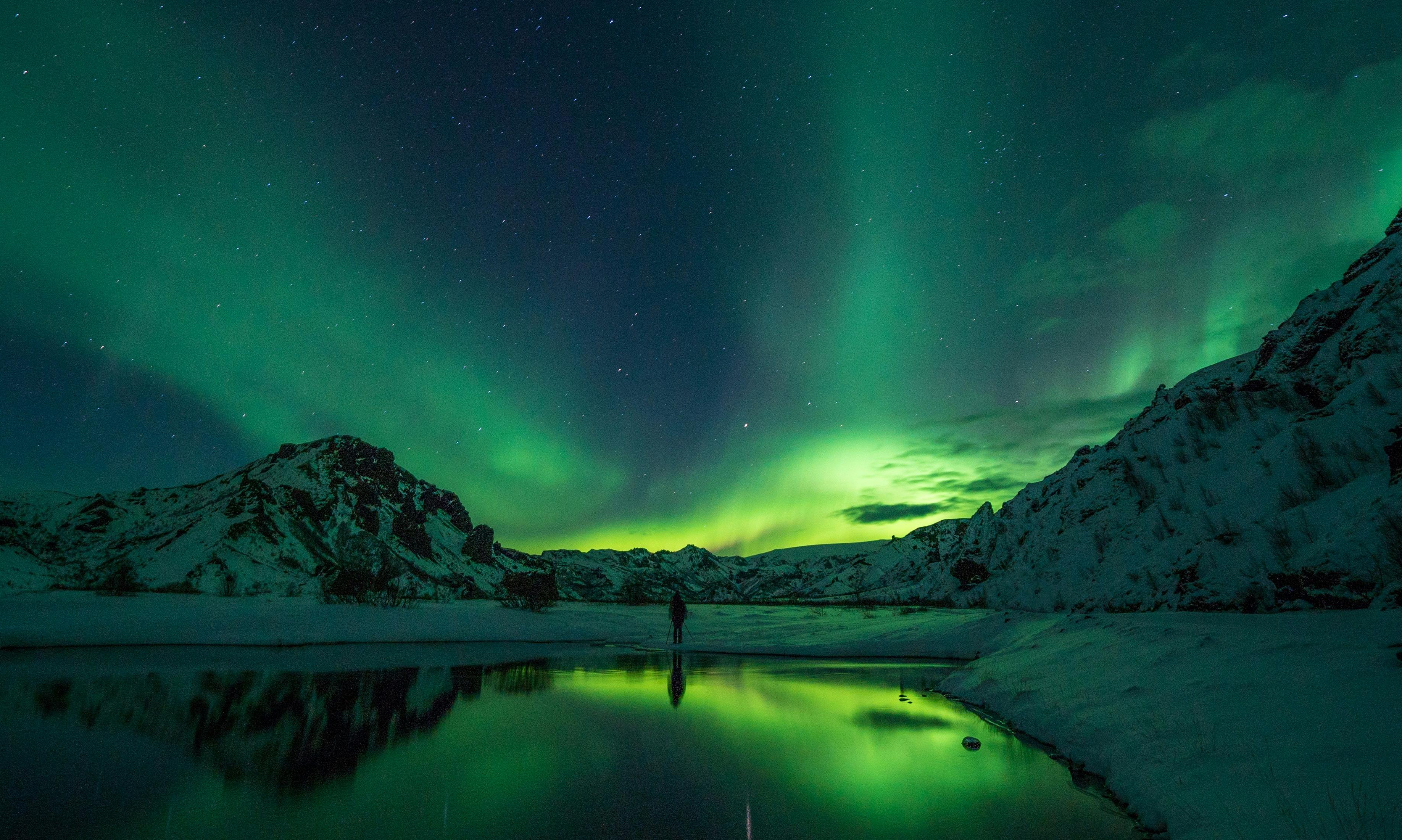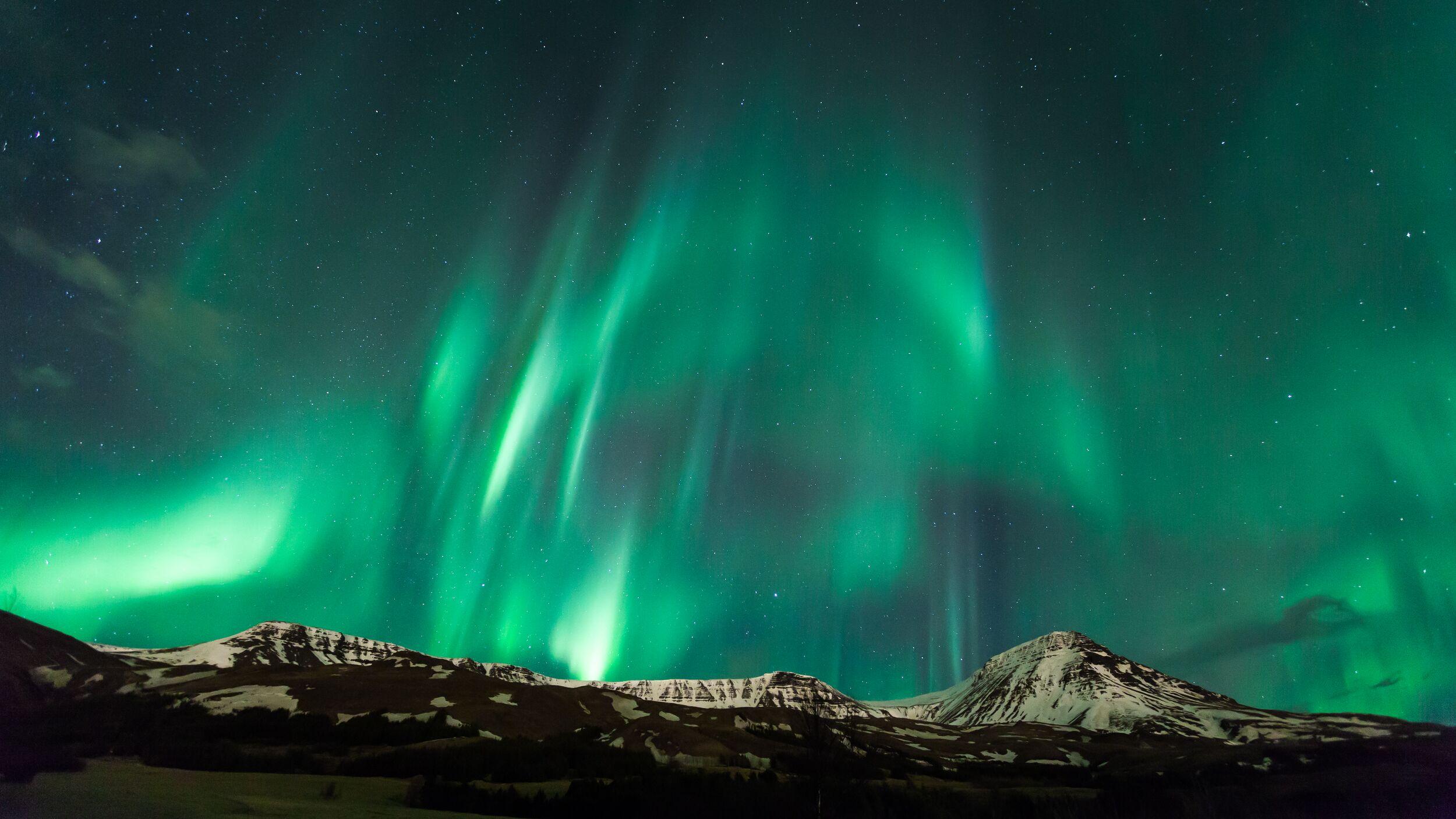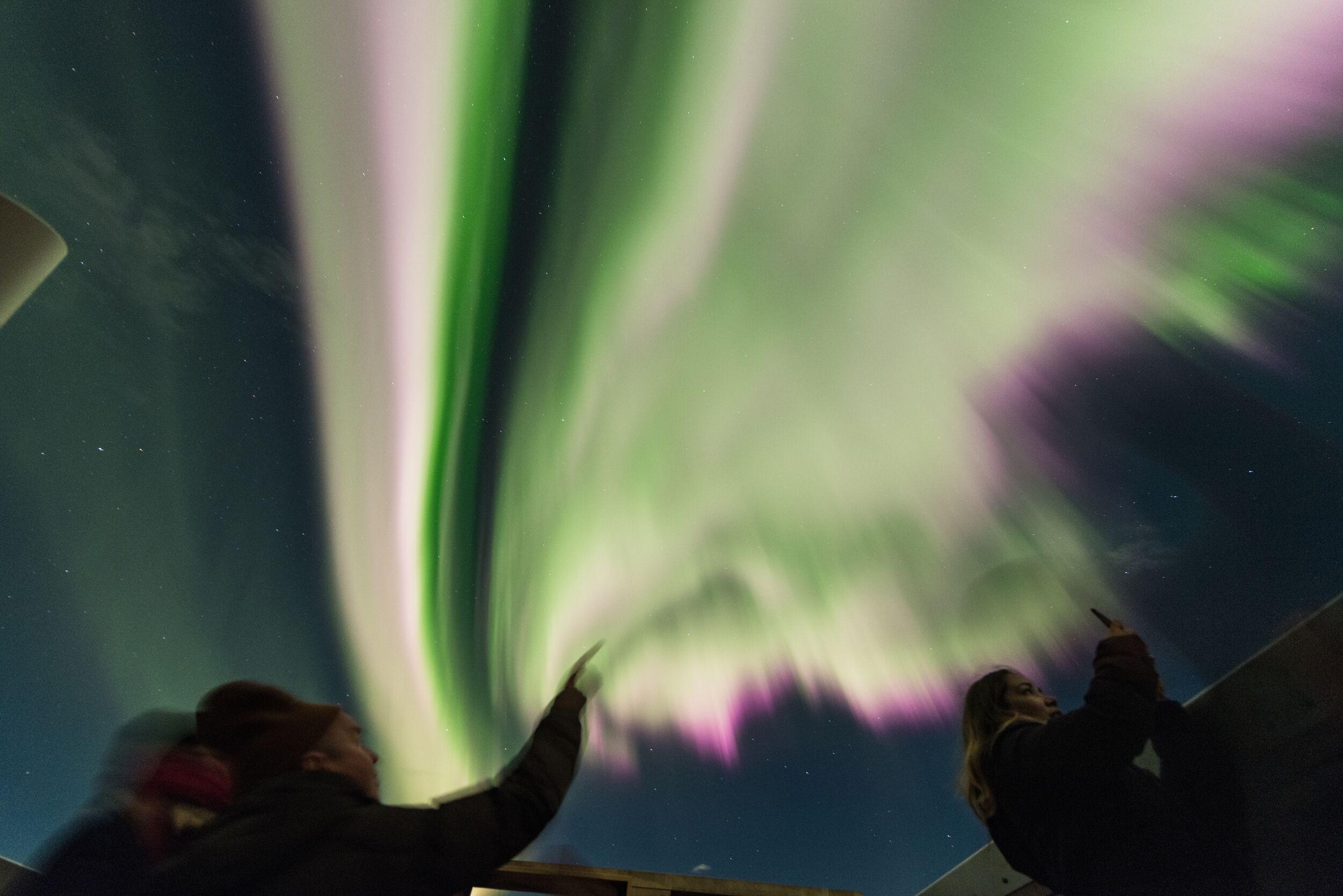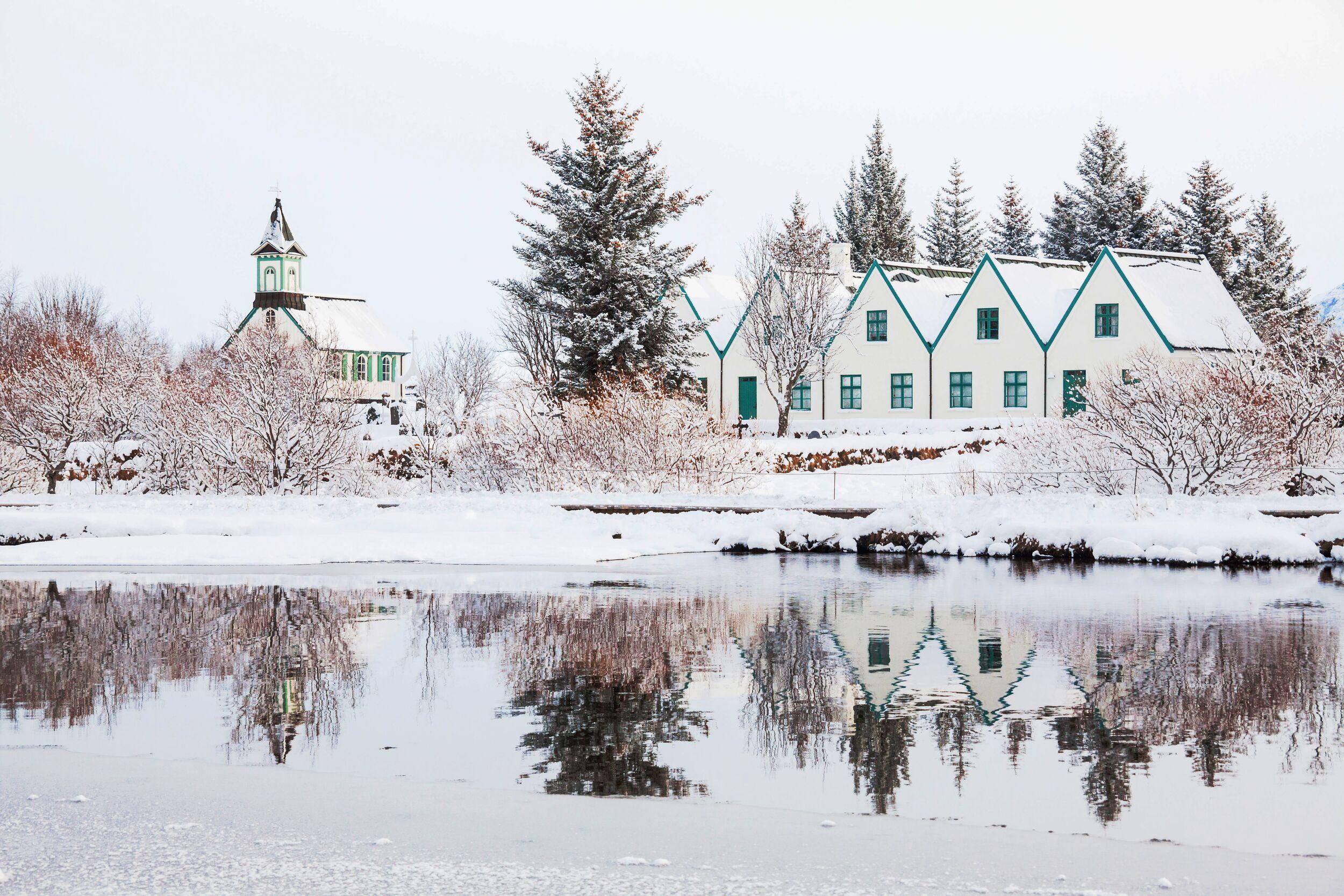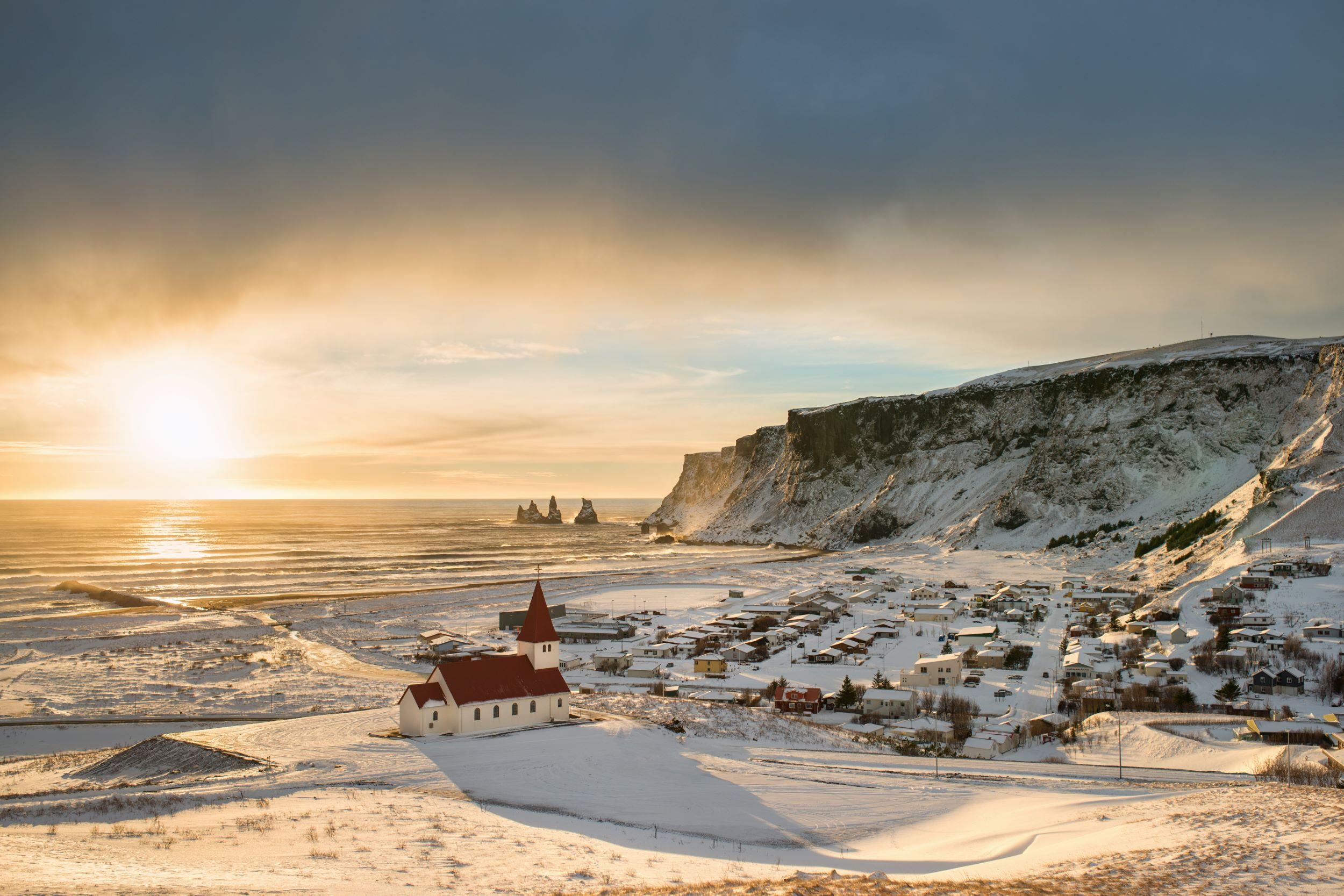7 Mystical Tales Behind the Northern Lights
Table of Contents
The Northern Lights, a stunning natural phenomenon, paint the night sky with an array of dazzling colours, sparking curiosity and awe. This magnificent display has captivated observers for centuries and has sown the seeds of numerous legends and myths across various cultures.
Each story, rich in tradition and imagination, offers a unique glimpse into how these lights have been revered and interpreted through the ages, reflecting the deep human desire to find meaning in the beauty of the natural world. Join us on a journey through time, exploring the enchanting and mystical narratives that have been woven around the Northern Lights, an enduring spectacle that continues to fascinate and inspire.
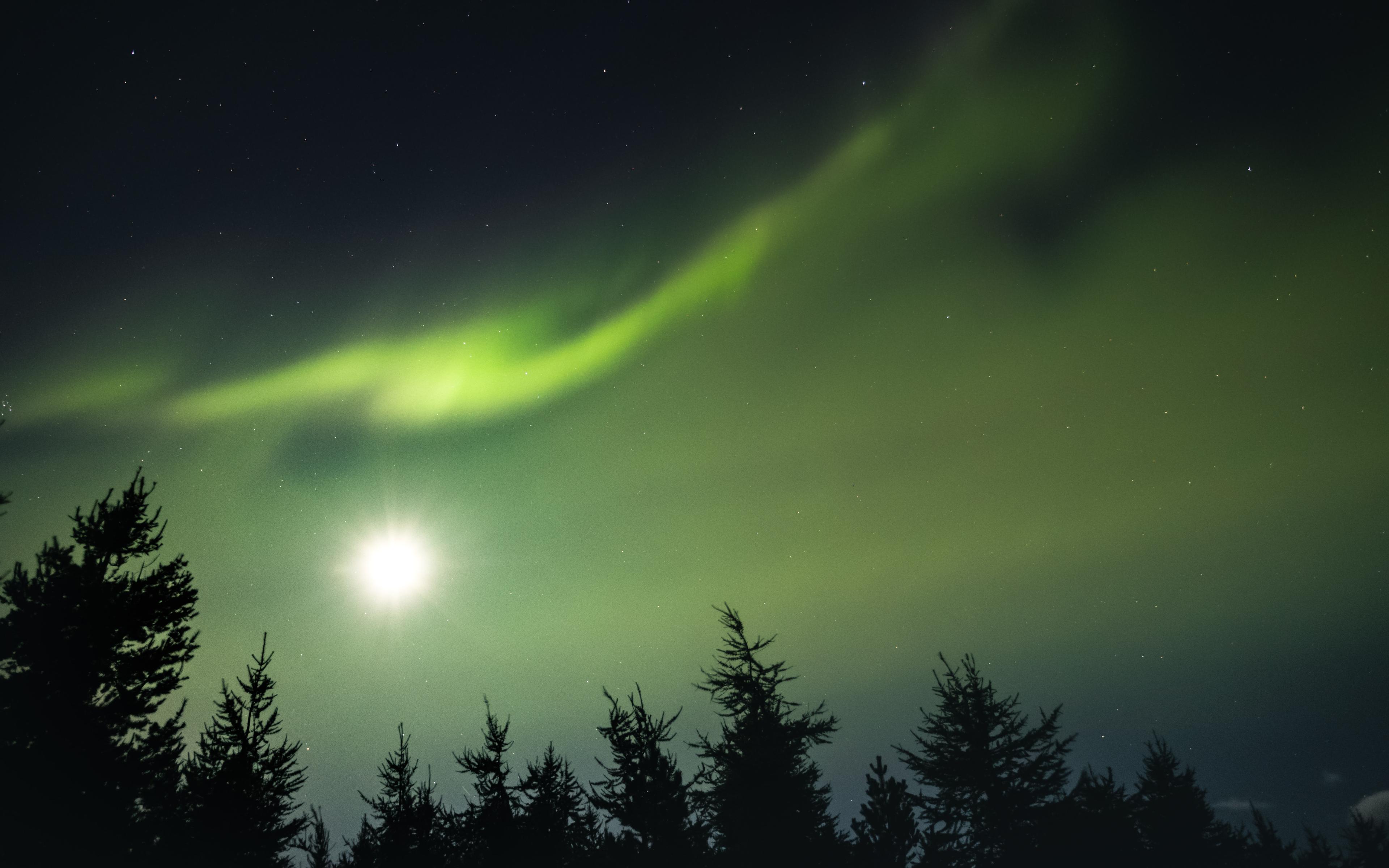
Odin, Valkyries, and the Pathway to Valhalla
To the Vikings, the Northern Lights were not merely beautiful displays of light. They held profound spiritual significance. The Vikings believed that the auroras were a sign from Odin, the Allfather of the gods and the ruler of Asgard. According to Norse legends, when the Northern Lights illuminated the night skies, it meant that Odin had dispatched the Valkyries, his mighty female warriors, on an important mission.
These ethereal beings, often depicted riding fierce horses through the heavens, were tasked with selecting brave warriors who had fallen in battle. It was a great honor for a Viking warrior to be chosen by a Valkyrie. Those selected were taken to Valhalla, Odin's grand hall, where they would prepare to aid the gods in the ultimate battle during Ragnarök, the end of the world.
A popular interpretation among the Norse was that the aurora's shimmering lights reflected the Valkyries' polished armour and shields. As these divine beings soared across the skies, their armours would catch the light, casting mesmerizing displays across the heavens.
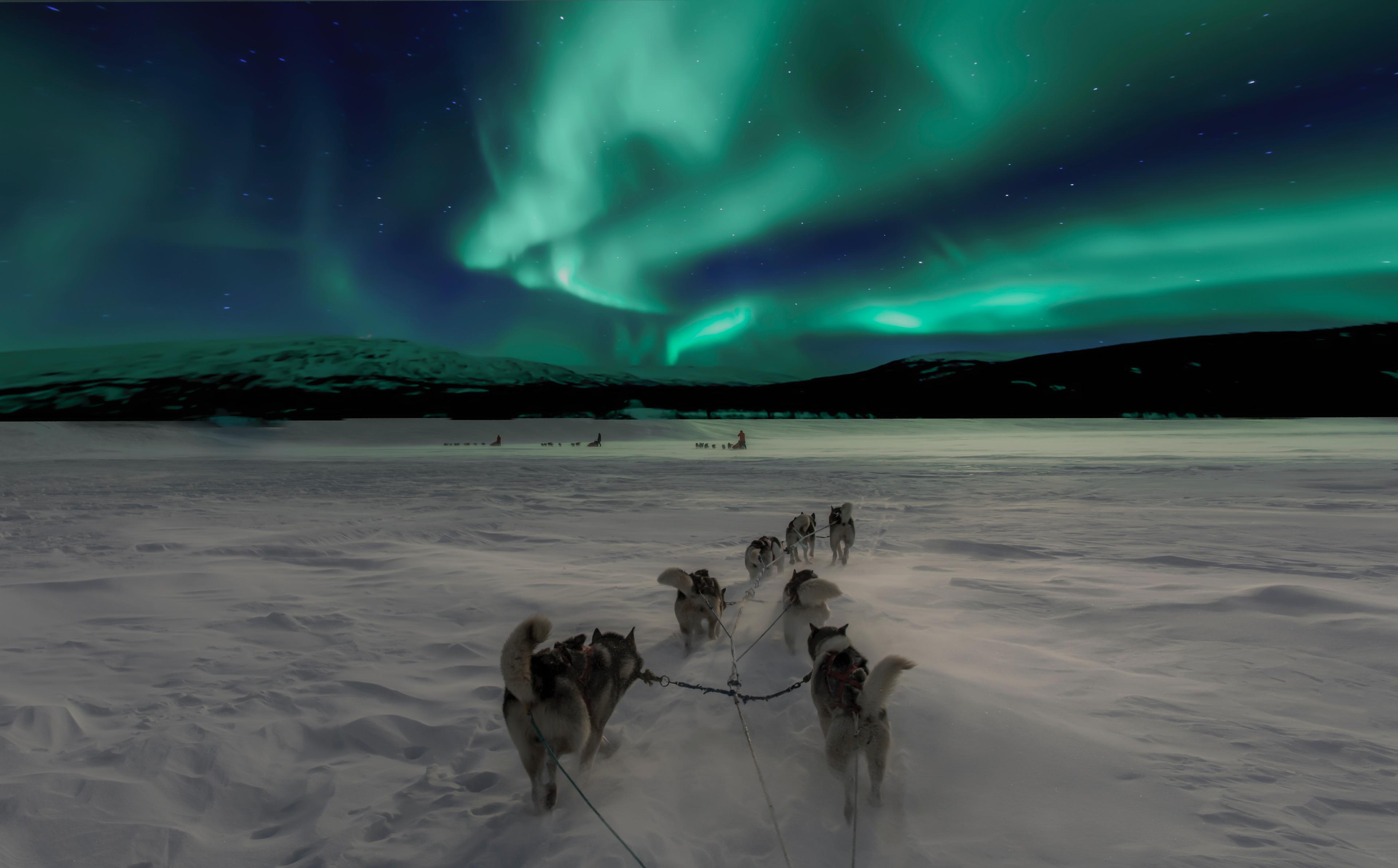
Bifrost Bridge and the Spirits of the Fallen
Some Viking tales also associated the Northern Lights with the Bifrost Bridge, a burning rainbow bridge that connected Midgard, the world of humans, to Asgard, the realm of the gods. This ever-shifting and luminous bridge was thought to be a path for fallen warriors, guiding their souls to the promised afterlife in Valhalla.
There were also tales that suggested the lights were the very breath or spirits of these fallen warriors. As they journeyed to the afterlife, their spirits would light up the sky, reminding those below of their bravery and sacrifices.
While the Vikings celebrated the appearance of the Northern Lights, there was also a sense of reverence and awe. The sheer magnitude and beauty of the auroras were reminders of the gods' powers and the vastness of the universe. To the Vikings, these lights underscored the delicate balance of life, death, and the eternal journey of the soul.
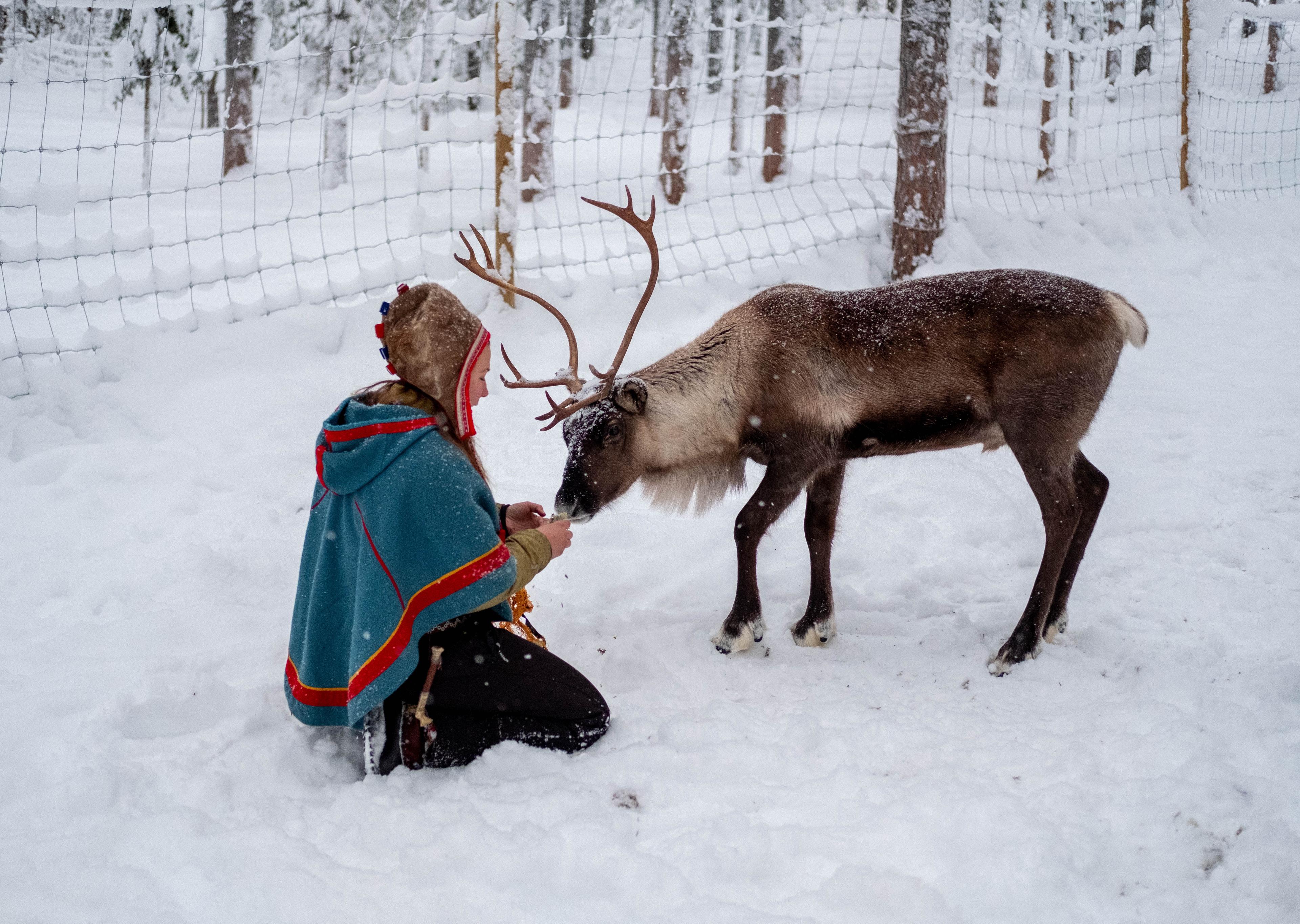
Sami Legends
The Sami, often referred to as the indigenous people of the Arctic regions spanning Norway, Sweden, Finland, and Russia's Kola Peninsula, have a long-standing and deeply spiritual relationship with the land and sky.One of the most widely held beliefs among the Sami is that the Northern Lights are the spirits of their ancestors dancing in the afterlife.
The wavy, undulating patterns of the lights are often interpreted as these spirits communicating or signalling to the living, and as a result, many Sami would show deep respect and even reverence when the lights were visible. It was common practice not to whistle, sing, or shout when the auroras were active in the sky, for fear of disturbing or angering these spirits.
Shamanism played an essential role in traditional Sami culture. The noaidi, or shaman, would use a special drum to communicate with the spirit world. Some legends state that the rhythmic beating of these drums could summon or influence the Northern Lights.
Another perspective from Sami folklore is that the Northern Lights are guardians. They ensure that the souls of the departed do not wander the Earth and instead guide them to their final resting place.
One of the most poetic and visually captivating myths from the Sami is the tale of the fire foxes. According to this legend, a fire fox would run across the tundras of Lapland, its bushy tail brushing against the mountains and setting the skies alight with sparks. These sparks, dancing and shimmering, would become the Northern Lights we see.
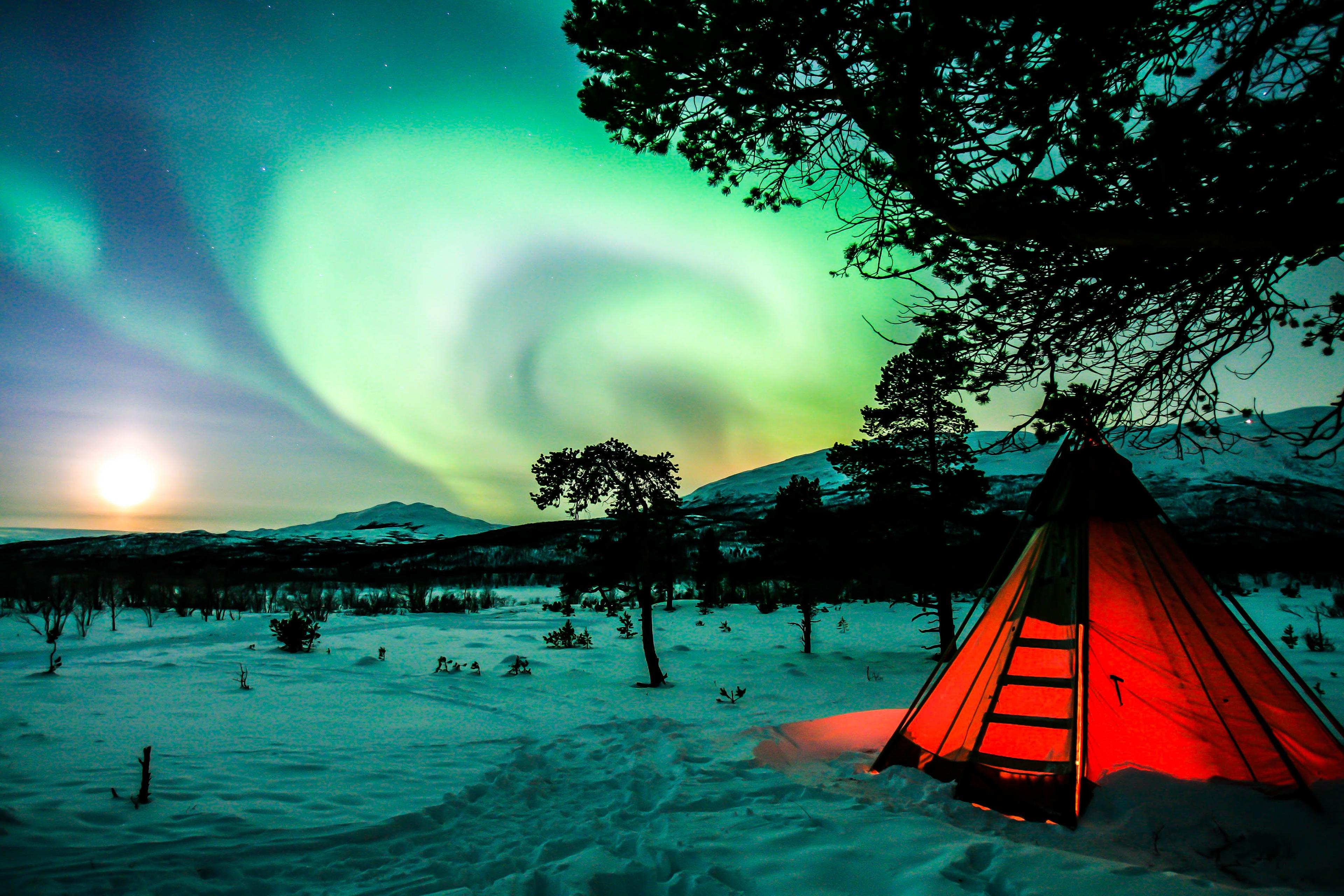
Eskimo Legends
The Sami and Arctic indigenous peoples, including the Inuit and Yupik, each hold deep-rooted and unique traditions about the Northern Lights. Despite their cultural and geographical differences, these groups share a profound reverence for this spectacular natural display.
A common belief among these communities was that the auroras embody the spirits of the animals they hunt, such as seals and deer, symbolizing the continuation of their spirit. For some, the lights represent a celestial bridge to the afterlife, guiding departed souls to peace. Others see them as ancestral lights, with elders teaching respect and reverence during their display to honour forebear spirits.
In certain Inuit cultures, taboos surround the Northern Lights. For example, pregnant women are cautioned against disrespectful actions during an aurora due to beliefs that the lights could adversely affect their unborn child. Among the Yupik, it's thought that the auroras mark the passage of human spirits to the afterlife, with their movement across the sky reflecting the journey of these souls.
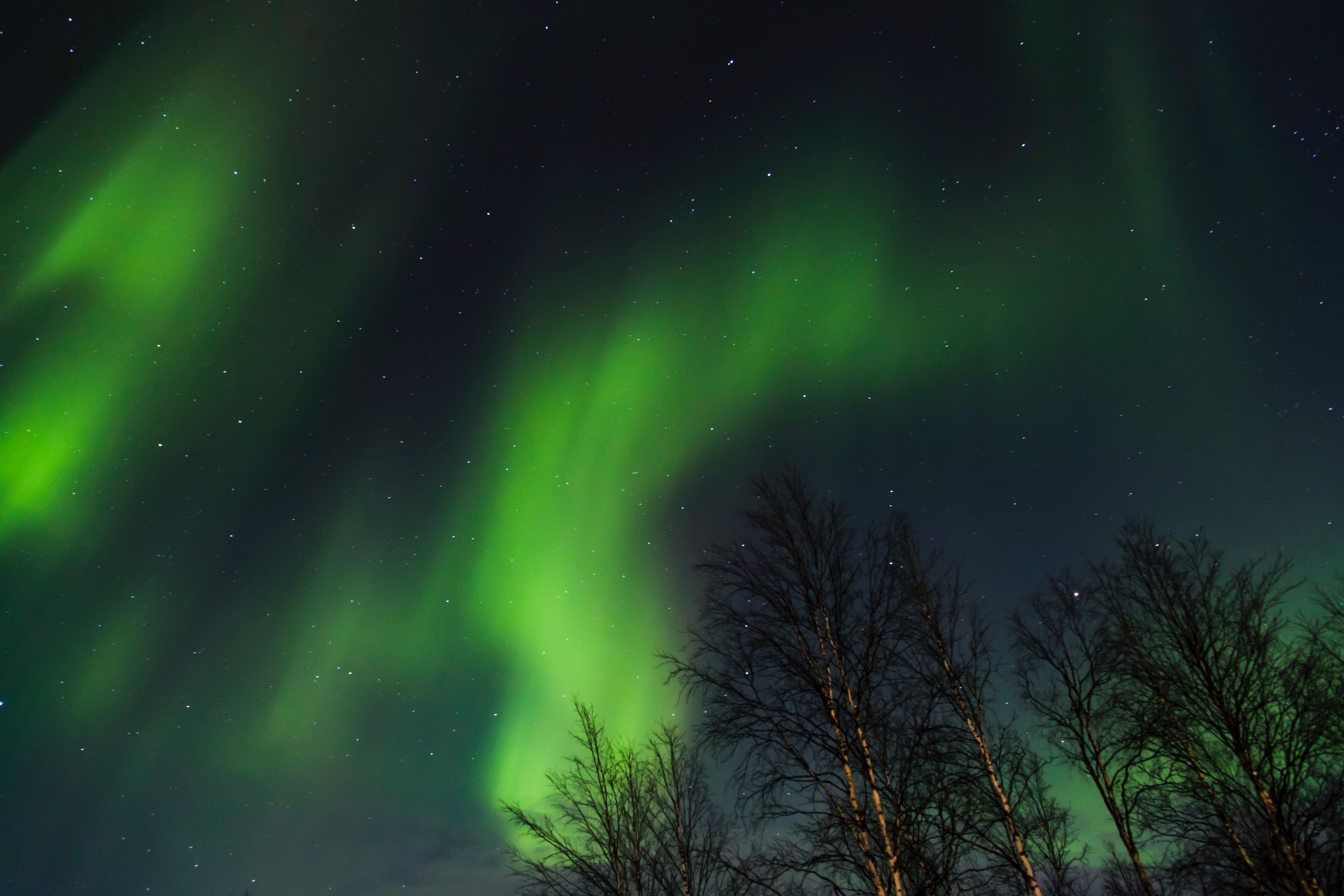
The Scottish Interpretation
Scotland, known for its dramatic landscapes and rich folklore, has its unique tales of the Northern Lights, locally known as "The Mirrie Dancers." or "Merry Dancers". Though less frequent, their appearance is greeted with awe and interpreted through ancient stories.
The most common legend depicts the lights as a celestial battle, with their vibrant colours symbolizing clashing swords and warrior cries in the sky. Intense displays are often seen as the battle's climax. Some Scots view the Mirrie Dancers as omens, indicating significant upcoming changes and prompting villagers to prepare or seek spiritual protection. Others believe the lights are fires lit by ancient gods, used for communication or mystical ceremonies.
Greek and Roman Mythology: How the Name Aurora Borealis Was Born?
In Greek and Roman mythology, Aurora is the personification of dawn, known to the Greeks as Eos and to the Romans as Aurora. Each morning, she would rise from her home at the edge of Oceanus, the ocean that encircles the world, and open the gates of heaven for the Sun to rise, heralding the arrival of a new day. She is depicted as a beautiful woman who rides a chariot pulled by winged horses; her Roman counterpart is often shown scattering flowers to signify the beginning of daylight.
The connection between the aurora borealis and the goddess Aurora is more poetic and metaphorical than observational, as it is unlikely that the auroras were often visible in the temperate latitudes where ancient Greeks and Romans lived. However, there have been instances throughout history where the aurora borealis has appeared at lower latitudes. During strong geomagnetic storms, the aurora can be pushed further towards the equator, making them visible in regions where they are not usually seen.
The name "Aurora Borealis" itself was coined much later than in the Greek and Roman eras. It is attributed to Galileo Galilei in 1619, who, inspired by Roman mythology, used "Aurora" for the goddess of dawn and "Borealis" for the north (from Boreas, the Greek god of the north wind). Hence, "Aurora Borealis" essentially means "dawn of the north."
Galileo's use of this term, however, was a bit of a misnomer. At the time, the nature of the auroras was not understood, and it was thought that the sun's light somehow reflected from the atmosphere to create the phenomena. It was only later that the connection between solar activity, the Earth's magnetic field, and the aurora was established.
We continue to use this name because the poetic term created by a Renaissance scientist resonated and became the standard scientific term. It captures the otherworldly beauty and majesty of the auroras, linking them to the mythic imagery of a radiant goddess opening the way for the sun, just as the auroras illuminate the dark polar skies.
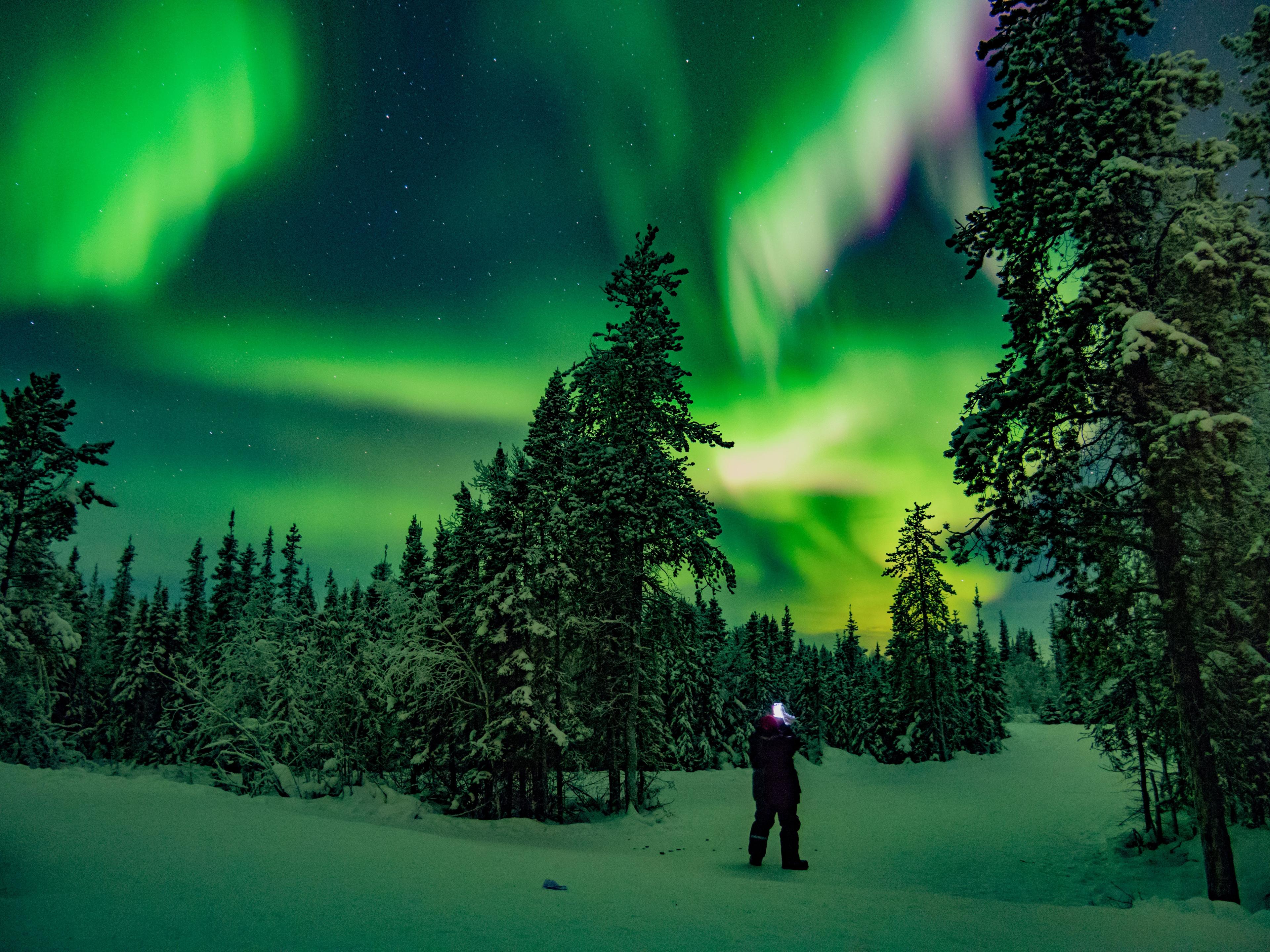
Icelandic Tales
In Iceland, aside from the Norse legends, the Northern Lights were intertwined with the most human of experiences—childbirth. The ethereal glow was said to alleviate the pains of labour, providing comfort to women in their most challenging hours.
However, this belief came with a peculiar warning: a pregnant woman should never gaze too intently at the auroras. The fear was that such a powerful display could leave its mark on the unborn, leading the child to be born cross-eyed. This mix of awe and caution illustrates the complexity of human interactions with natural phenomena, where hope and fear often reside side by side.
Today, as scientific understanding illuminates the origins of the Northern Lights, many of us are well-versed in the physics behind their ethereal glow. We know these lights are not the fiery trails of celestial foxes or the souls of ancient warriors but rather the result of solar winds interacting with Earth's magnetic field. Yet, in our modern world, there's a special reverence for the ancient beliefs and tales our ancestors held dear.
These stories, passed down through generations, are treasured for their cultural richness and the imaginative vistas they open. These myths and legends connect us to our past. It's this blend of knowledge and myth, of science and tradition, that enriches our appreciation of the Northern Lights, making them a timeless spectacle that continues to fascinate and inspire across cultures and ages.
Select Your Northern Lights Tour
Are you keen to soak in the splendour of this natural wonder, unravel the rich tapestry of tales tied to it, and understand the science that makes it possible? Our tours are tailored for just that. Join us for a front-row view of the auroral display and let our expert guides enrich your experience with their wealth of knowledge.
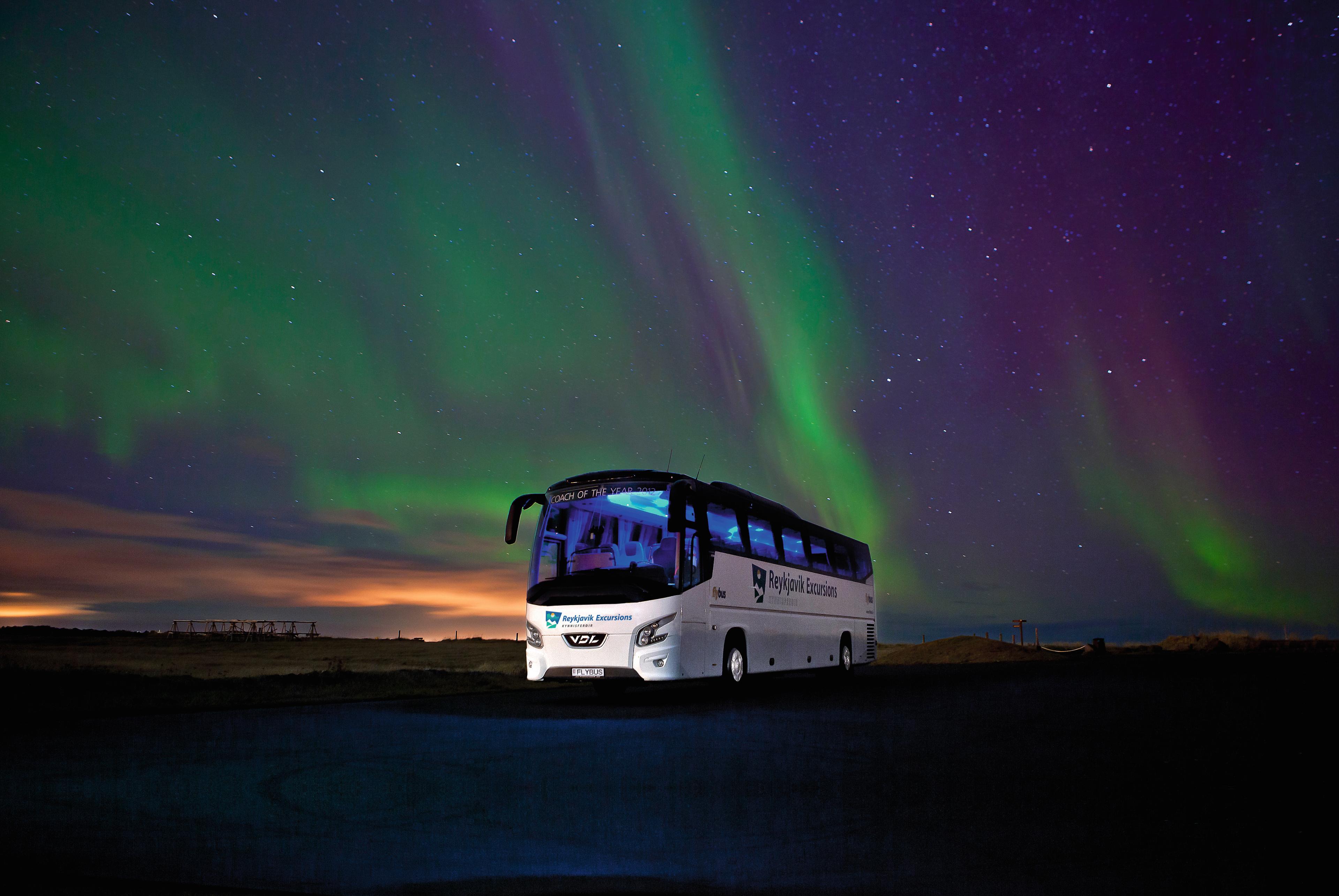
Northern Lights Tour
See the majestic Northern Lights dancing across the sky. If the skies are shy, try again free of charge as many times as you need until you see them! Learn about the phenomenon by visiting the Aurora Centre - Northern Lights Exhibition in Reykjavík; admission is included in this tour!
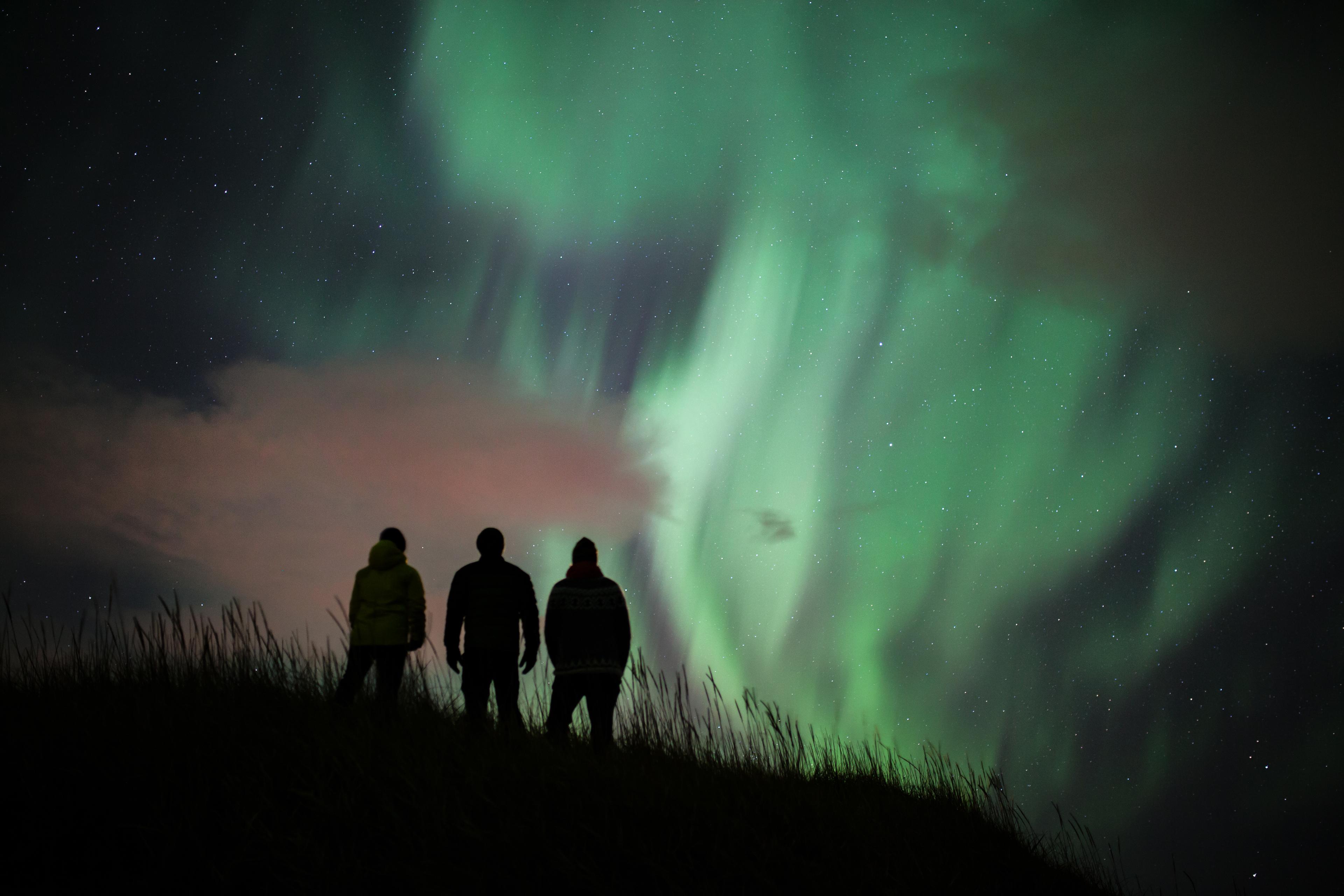
Northern Lights - Small Group Tour
Catch the stunning Northern Lights in the sky, and if they're shy, rebook for free until they show. Included admission to the Aurora Centre's Northern Lights Exhibition on the tour date. The small group size ensures an intimate experience and personalized attention from your expert guide.
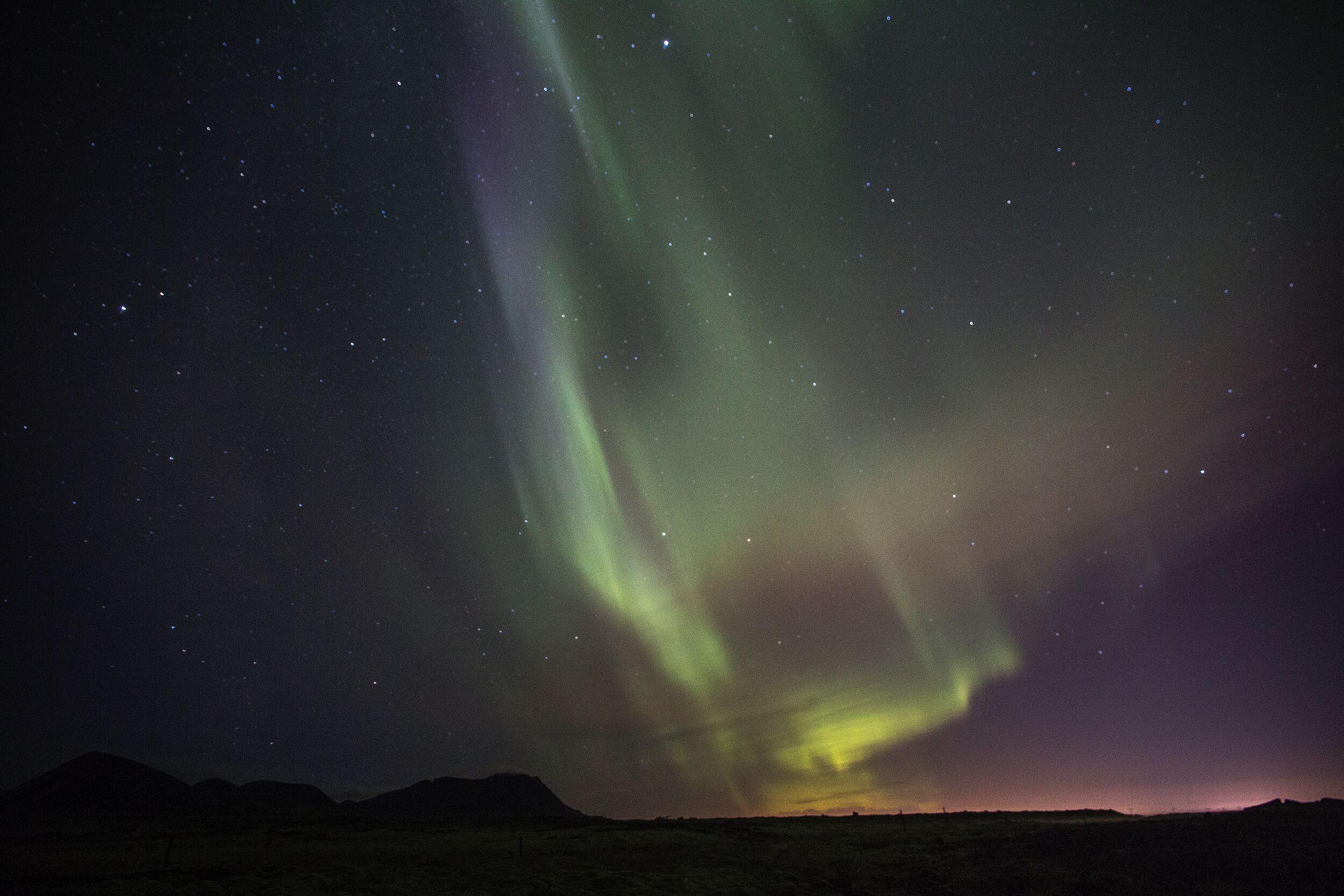
The Golden Circle & Northern Lights - Combo Deal
Want to see the sites of the Golden Circle and hunt for the northern lights but have a limited amount of time? Consider this express Golden Circle/Northern Lights tour! Experience the landmarks of the classic Golden Circle in South Iceland on this unforgettable day tour. The Golden Circle encompasses the must-see sights of Thingvellir National Park, the golden Gullfoss waterfall, and the bubbling geothermal region of Geysir. After your return to Reykjavík, a guide will lead you on a search for the elusive northern lights!
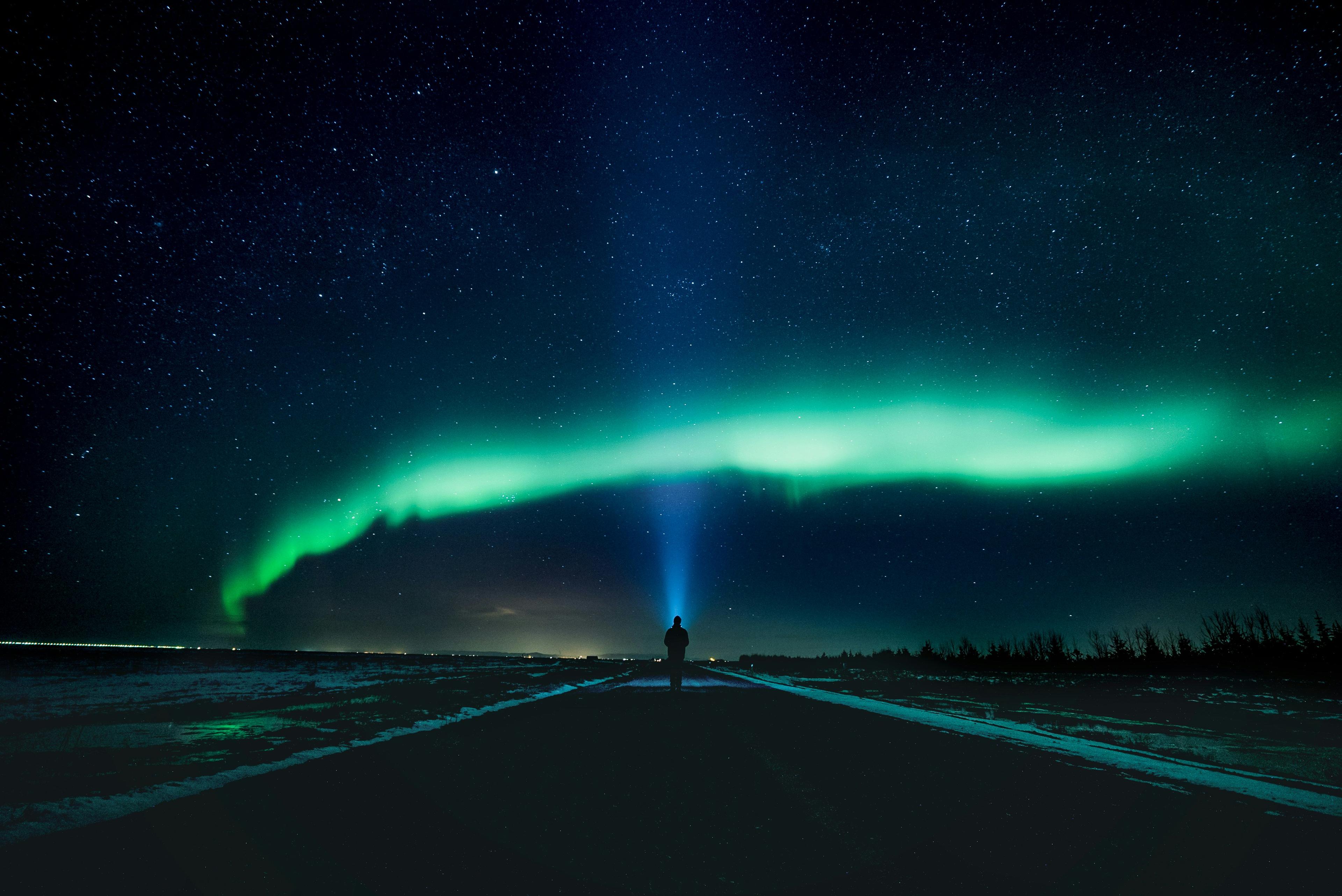
Northern Lights Explorer – Super Jeep Tour
Embark on an unforgettable Northern Lights adventure from Reykjavík in a specially modified Super jeep designed to explore off-the-beaten-path locations. Escape the crowds and experience the breathtaking Aurora in the remote Icelandic wilderness.
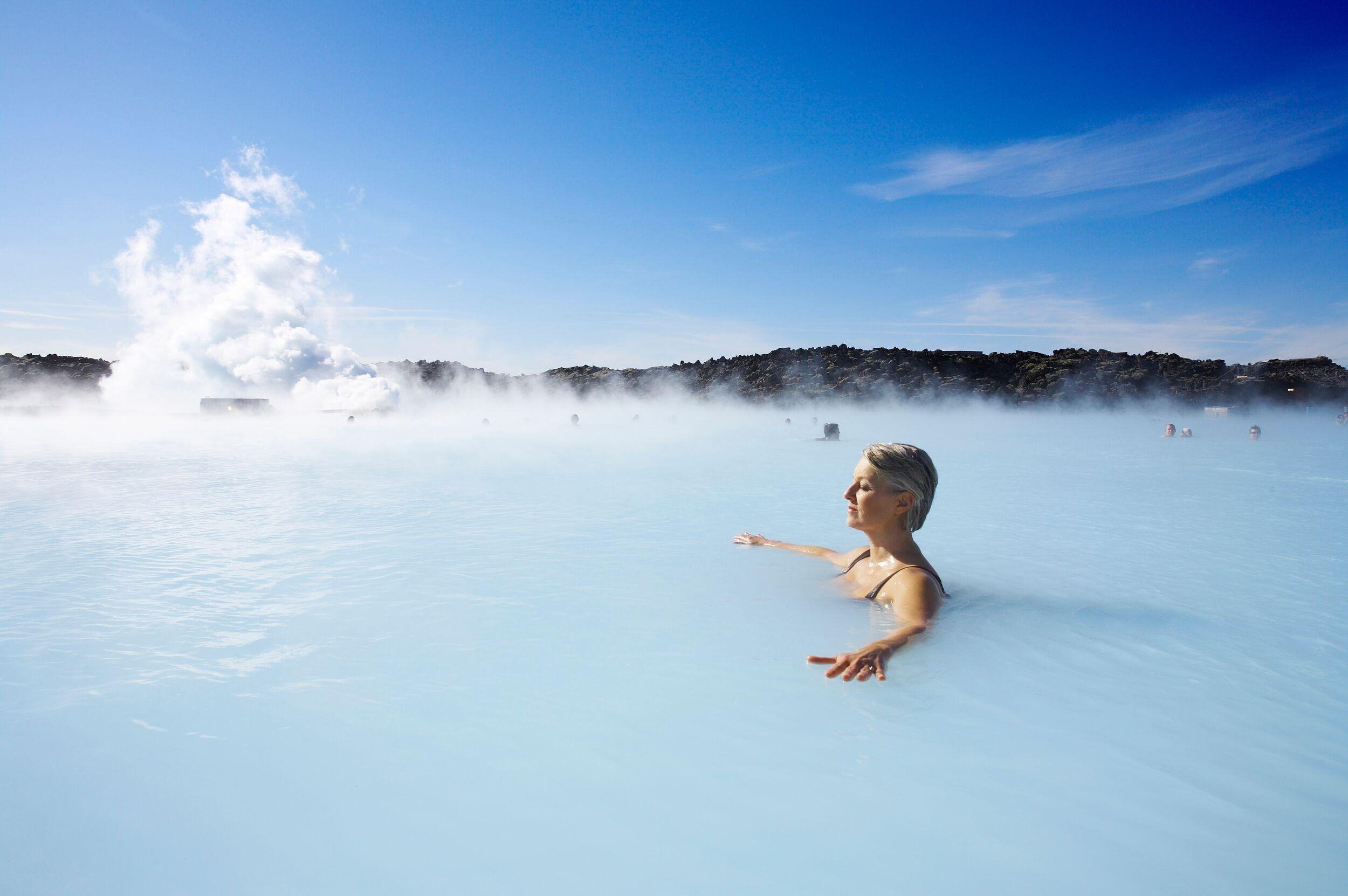
- Best seller
- Popular
Blue Lagoon & Northern Lights
Enjoy a perfect winter day in Iceland! Experience the best of Iceland with this package of two of the island’s most popular tours in one day! Soak in the milky blue healing water of the Blue Lagoon, which is one of Iceland's most famous tourist attractions and is considered by many to be a once-in-a-lifetime experience and an unmissable part of a visit to Iceland. After your return to Reykjavík, a guide will lead you on a search for the elusive northern lights! Watching the lights dance and flicker in the sky, changing shape and colour, is incredible. Prepare to be dazzled!
Questions and Answers about Northern Lights ours in Iceland
Almost any camera phone these days is powerful enough to take decent pictures of the Northern Lights. In fact, many phone cameras are actually better than proper cameras!
To take a good photo, turn your exposure to the maximum, turn off the flash, and use night mode. Apps such as Nightcap, Cortex Camera, or the Northern Lights Photo Taker can help too.
The rarest colours of the Northern Lights are blue and red. Blue auroras are produced by nitrogen molecules at lower altitudes and are less common. Red auroras, occurring at the highest altitudes and caused by high-altitude oxygen, are also relatively rare. Both these colours require specific atmospheric conditions to be visible, making them a less frequent but spectacular sight in auroral displays.
The Northern Lights can be seen from Reykjavík, yes. And it’s a magical experience to see them by chance when you’re just enjoying your evening.
However, the city is not the best place to see the Northern Lights. That’s because light pollution can prevent them from appearing with their full strength. Instead, you want somewhere dark to enjoy them at their best.
The Northern Lights are special for a couple of key reasons:
1. Unique Natural Phenomenon: They represent a spectacular natural light display in the Earth's sky, primarily seen in high-latitude regions around the Arctic and Antarctic. This phenomenon results from the interaction between the Earth's magnetic field and charged particles from the sun, making it a unique celestial event.
2. Cultural and Mythological Significance: Throughout history, the Northern Lights have held significant cultural and mythological importance in various societies. They have inspired numerous folklore tales and art and have been a subject of awe and wonder. Their ethereal beauty and the magical experience they provide add to their special status in human perception and experience.
It’s possible to see the Northern Lights in Iceland throughout the winter.
For the Northern Lights to be visible, you need two things: solar activity and a clear, dark sky. The darker the better—that’s why winters in very northern countries like Iceland are the best time to see them.
The darkest months of the year are November, December, and January. However, you can see Northern Lights from the middle of August through to April and studies show that the closer you are to the equinoxes, the higher the likelihood of seeing the Northern Lights. Based on that you'd want to place your bet on September/October and March/April.
The scientific processes that cause the Northern Lights occur very often, if not pretty much all the time—throughout the night, day, winter and summer. However, often you can’t see them because of the cloud, the midnight sun, or because you’re not looking.
While every night might be an exaggeration, the Northern Lights are much more common than you might think!
Auroras can last from a few minutes to several hours, depending on the intensity of the geomagnetic storm causing them.
To maximize your chances of seeing the Northern Lights, it's advisable to stay for at least a week. This duration allows for variability in weather conditions and solar activity, which are crucial factors in the visibility of the auroras. Since the Northern Lights are a natural phenomenon and their appearance can be unpredictable, a longer stay increases the likelihood of witnessing this spectacular display, especially considering potential cloudy nights or periods of low solar activity.
Facing north often increases your chances of seeing the Northern Lights, especially in lower-latitude areas. In Iceland, however, the lights are most often right above our heads or stretching across the entire sky.
There’s no way of guaranteeing that you’ll see the Northern Lights. It’s a natural phenomenon that’s affected by the weather, after all. But with Northern Lights tours, you do have a pretty good chance.
In Iceland, December is the month when the days are shortest and nights are darkest which typically makes it a favourite month for Northern Lights-hunting. However, studies show that the closer to the equinoxes you are, all the more likely you are to see northern lights in the northern hemisphere. So, some would prefer September and October or March and April over the darkest months, sacrificing a few hours of darkness for a higher likelihood of lights.
That said, you can have as much luck seeing the aurora borealis in any of the months of the winter. All you need is dark, clear skies.
Exciting studies and anecdotal evidence, ranging from Sami folklore to modern stargazers, suggest that the Northern Lights might produce sounds, a phenomenon as elusive as the lights themselves.
Historically, indigenous peoples and early Arctic explorers reported hearing sounds like crackling and whooshing during auroral displays, though these claims were met with scepticism since auroras occur at altitudes beyond the human ear's acoustic range.
Recent research in Finland, however, has recorded sounds such as claps and crackles coinciding with the auroras at lower altitudes within the human audible range. This emerging theory suggests that the electrical phenomena of auroras, involving charged particles and temperature variations, could generate these sounds akin to the noise produced by a spark.
While not all observers experience these sounds, and they're often heard under specific, quiet conditions, for some, the Northern Lights are not just a visual spectacle but a celestial concert, highlighting the dynamic nature of our planet.
Yes, you can see the Northern Lights in Reykjavik in some cases. However, when the lights are faint or low on the horizon, their visibility can be significantly reduced by the city lights and obstructed by buildings. For the best viewing experience, it's recommended to find spots away from the urban light pollution and with an unobstructed view of the sky.
It’s not at all rare to see the Northern Lights in Iceland! That’s why so many people come to the Land of Ice and Fire to enjoy the display.
In fact, you can see the aurora borealis almost every night if the skies are clear. You just need to know where to look!
The best way to increase your chances of seeing the Northern Lights is to join a tour. While you can sometimes see the phenomenon by yourself, when you’re led by an expert guide, they’ll be able to show you exactly where to look.
What’s more, if you don’t see the Northern Lights on your tour, we’ll give you a ticket to another tour on a day that suits you for free—to double your chances.
Three interesting facts about the Northern Lights are:
1. The Northern Lights, also known as Aurora Borealis, are caused by the interaction of solar wind - a stream of charged particles escaping the Sun - with Earth's magnetic field and atmosphere.
2. They can exhibit a variety of colours, with green being the most common. These colours result from different gases in the atmosphere getting excited by the solar particles; oxygen emits green and red hues, while nitrogen gives off blue and purple.
3. Although best known for appearing in polar regions, during periods of strong solar activity, the Northern Lights can be seen at lower latitudes, far from the polar areas. This makes them a spectacular and somewhat unpredictable natural light show.
To see the Northern Lights at their best, it’s recommended that you find a place where light pollution is lowest. That’s why the best Northern Lights tours will leave cities such as Reykjavík—because you can see the aurora better where it’s darkest.
That said, you can see the Northern Lights from the city. And as weather conditions and cloud cover change every night, the best place to see the Northern Lights changes too.
Seeing the Northern Lights in Iceland is fairly likely during the winter months if weather conditions are favourable.
The price of Northern Lights tours in Iceland depend on what you want to get up to and how you want to travel.
The most affordable option is the classic tour from Reykjavík, which takes you by coach to a destination where the conditions are best that evening. But if you want to travel by small group, or on a private vehicle, you will pay more.
The same goes for tours that take you to different destinations, such as the Golden Circle or the Blue Lagoon.
Check out individual tour pages for up to date prices.
The Northern Lights do not occur every night; their visibility depends on solar activity and atmospheric conditions.
The Northern Lights are not exclusively in the north; they are mirrored by the Southern Lights (Aurora Australis) in the southern hemisphere, both occurring near the Earth's magnetic poles.
When on a Northern Lights tour, plan to wear clothes that will best keep you warm. You’re going to be outside at night in the Icelandic winter, and to enjoy the experience to the fullest you won’t want to get cold.
The best idea is to wear lots of thin layers, plus a winter jacket and a windproof outer shell. And don’t forget to keep your feet warm! Icelandic woollen socks, for example, can be a good idea.
The best parts of Iceland for Northern Lights are outside urban areas, with the eastern northern and western regions often recommended for clearer skies.
Related Articles
See all articlesRecommended tours
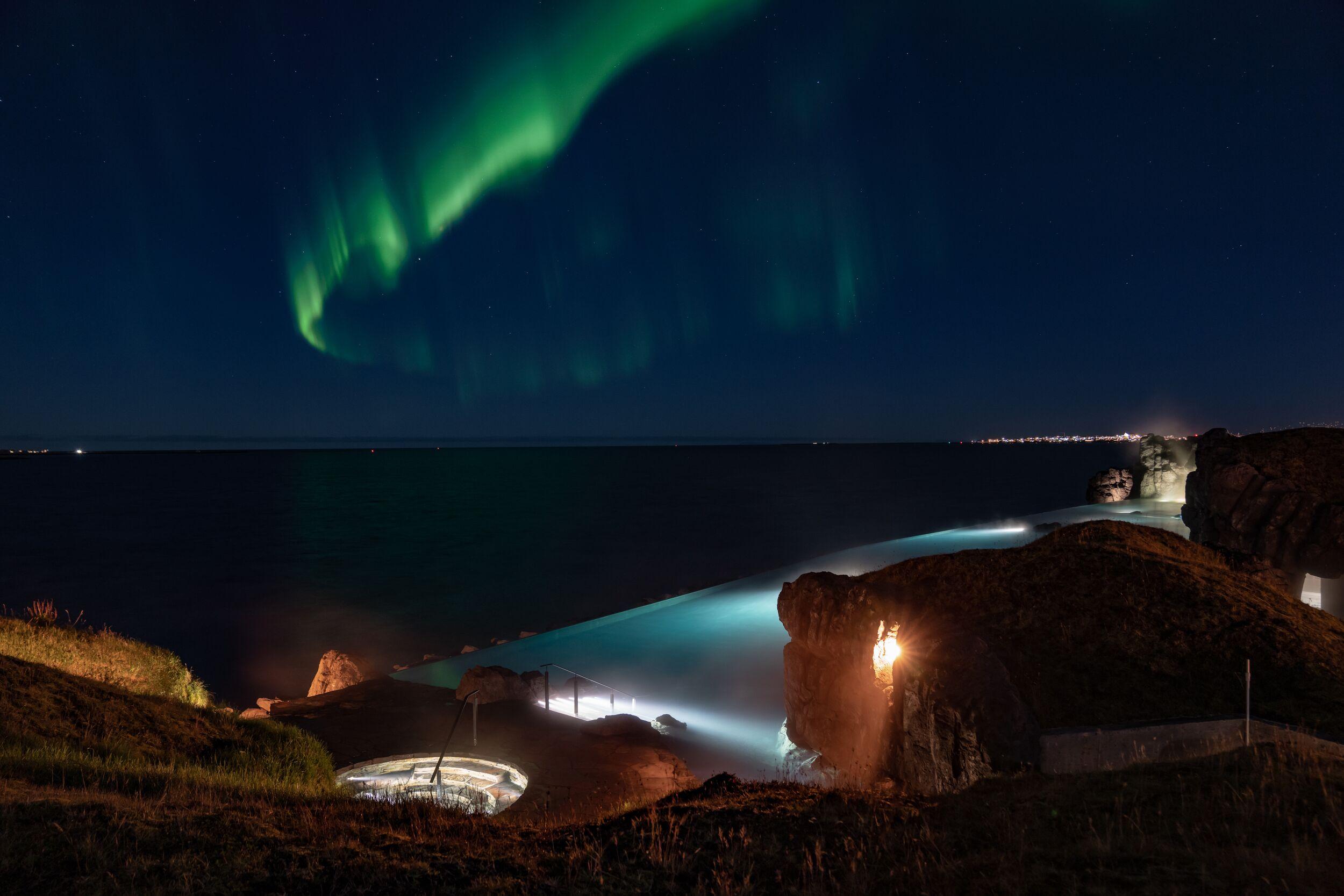
The Sky Lagoon & Northern Lights
Enjoy a relaxing soak in the Sky Lagoon before your adventurous Northern Lights hunt.

The Golden Circle & Northern Lights - Combo Deal
Want to see the sites of the Golden Circle and hunt for the northern lights but have a limited amount of time? Consider this express Golden Circle/Northern Lights tour! Experience the landmarks of the classic Golden Circle in South Iceland on this unforgettable day tour. The Golden Circle encompasses the must-see sights of Thingvellir National Park, the golden Gullfoss waterfall, and the bubbling geothermal region of Geysir. After your return to Reykjavík, a guide will lead you on a search for the elusive northern lights!

Northern Lights Tour
See the majestic Northern Lights dancing across the sky. If the skies are shy, try again free of charge as many times as you need until you see them! Learn about the phenomenon by visiting the Aurora Centre - Northern Lights Exhibition in Reykjavík; admission is included in this tour!

Northern Lights - Small Group Tour
Catch the stunning Northern Lights in the sky, and if they're shy, rebook for free until they show. Included admission to the Aurora Centre's Northern Lights Exhibition on the tour date. The small group size ensures an intimate experience and personalized attention from your expert guide.

- Best seller
- Popular
Blue Lagoon & Northern Lights
Enjoy a perfect winter day in Iceland! Experience the best of Iceland with this package of two of the island’s most popular tours in one day! Soak in the milky blue healing water of the Blue Lagoon, which is one of Iceland's most famous tourist attractions and is considered by many to be a once-in-a-lifetime experience and an unmissable part of a visit to Iceland. After your return to Reykjavík, a guide will lead you on a search for the elusive northern lights! Watching the lights dance and flicker in the sky, changing shape and colour, is incredible. Prepare to be dazzled!

Northern Lights Explorer – Super Jeep Tour
Embark on an unforgettable Northern Lights adventure from Reykjavík in a specially modified Super jeep designed to explore off-the-beaten-path locations. Escape the crowds and experience the breathtaking Aurora in the remote Icelandic wilderness.


